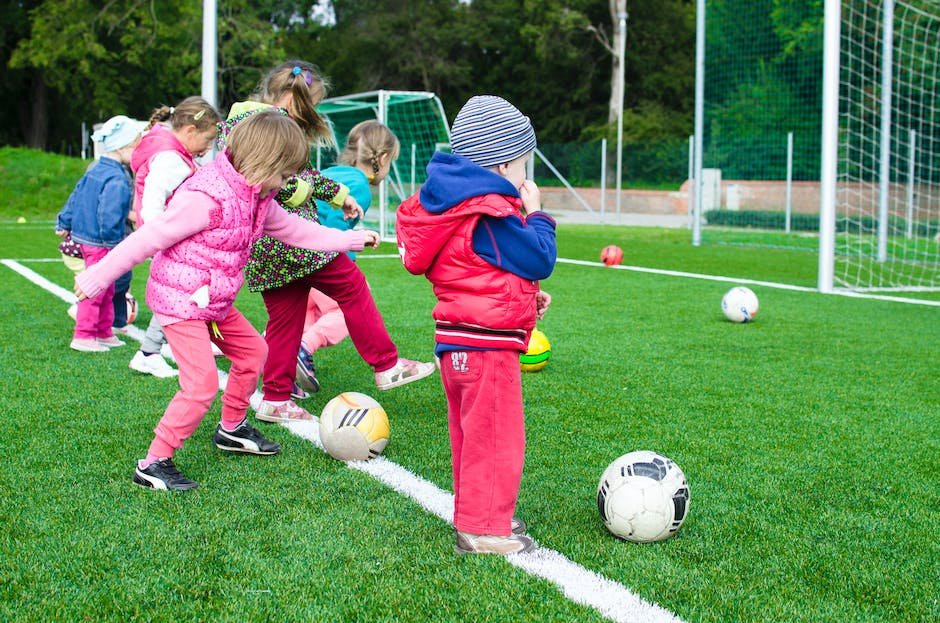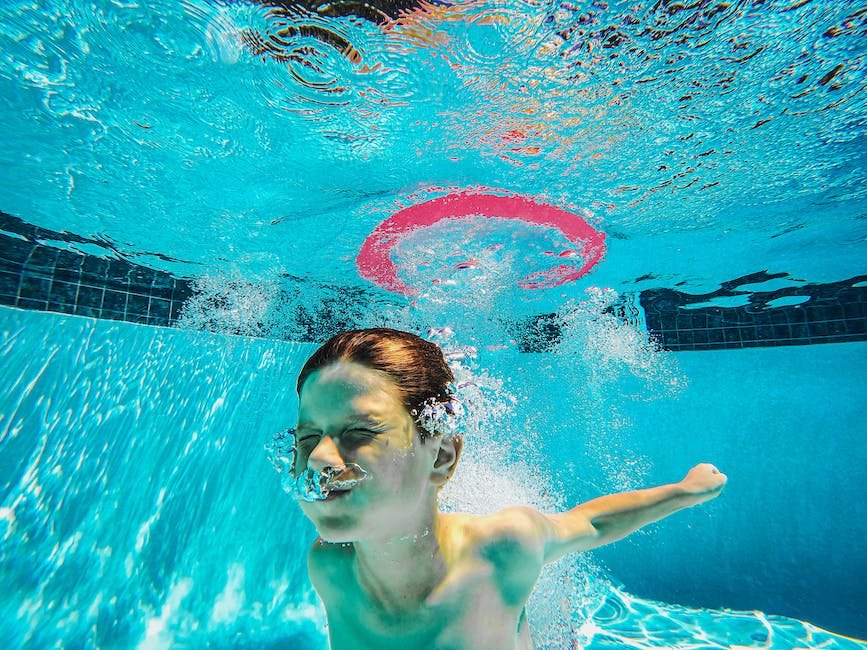
There’s a strong interconnectedness evident between the peaceful strides of swimming and the complexities of Autism Spectrum Disorder (ASD) in children, with multifaceted benefits steadily emerging. As society looks beyond the horizon of traditional therapies, the distinct physical and psychological advantages of swimming have started gaining deserved attention in aiding children with autism. This discussion aims to shine a spotlight on the importance of understanding autism in children, and how introducing physical activities, specifically swimming, can foster their overall development. Through practical advice tailored for parents and caregivers, alongside relatable success stories, a well-rounded, informative narrative unfolds on the profound impact swimming may have on children with autism.
Understanding Autism in Children
Understanding Autism: The way It Influences Our Amazing Little Ones
Autism, also known as Autism Spectrum Disorder (ASD), is a complex neurodivergence that manifests in various ways, impacting communication, social interaction, and sometimes physical health. It’s an integral part of our kids’ life, much like the color of their eyes or the sound of their laughter. Embracing and understanding it makes a world of difference.
The Symptoms of Autism
Autism is mostly identified at an early age, around 2 to 3 years old. Children on the autism spectrum can display a broad range of symptoms, and it’s essential to remember that no two children are exactly alike. Some might have difficulty making eye contact or engaging in conversations, while others might exhibit an intense, focused interest in specific topics or activities. Repetitive behaviors, like hand-flapping or rocking, are also common among kids with autism. Remember, these are merely potential indicators, and it’s always beautiful to see our kids express their unique individuality.
The Effects of Autism on Learning
In the educational realm, kids with autism can face some challenges. Traditional classroom settings might not cater to their unique learning style, making schooling a bit of an uphill climb. But with a tailored approach, it’s heartwarming to see how far they can come. Every child on the spectrum possesses incredible potential – it’s our responsibility as the community to help unravel it. Educational plans, personalized for our little ones, are a fantastic way to help them shine, letting their intelligence and creativity unfurl.
Autism and Social Interaction
Social interactions can sometimes pose a hurdle for kids with autism, but with understanding and guidance, it doesn’t have to. It might take them a little more time to understand social cues or express their feelings. Remember, patience is the key – showing them constant, unyielding support can do wonders.
Autism and Sensory Sensitivity
Sensitivity to sensory stimuli is another common characteristic of autism. Lights, noise, or certain textures might overwhelm them, leading to distress. It’s beneficial for these kiddos to have a calm, restful space – let’s think of it as their cosy little hideaway. Also, it’s always a good idea to familiarize themselves with the environment before exploring new places.
The Silver Lining
Of course, while there are challenges associated with autism, there are also bright spots. Children on the spectrum often excel brilliantly at tasks they’re passionate about. Their unparalleled focus can lead to triumphant achievements in fields like mathematics, art, or technology. Their unique perspective enriches our lives, nudging us to view the world through a different lens.
Understanding autism is the first step to creating an inclusive world for our beloved little ones. Equip ourselves with knowledge, build a nurturing habitat imbued with empathy, and let them sprout wings. Let us remember, our kids aren’t confined by autism – they’re simply on a different journey, a journey every bit as beautiful, filled with moments of joy, triumphs, and growth.

The Role of Physical Activities in Autistic Children’s Lives
Harnessing the Power of Movement: The Impact of Physical Activity on Children Living with Autism
Autism spectrum disorder is as diverse as the people it affects; no two children present the exact same characteristics. In addition to being unique individuals, children with autism can greatly benefit from physical activities. When tailored to their skills, preferences and needs, physical activities can significantly contribute to their overall health and development.
First off, let’s dive into why physical activities matter. For children on the autism spectrum, development encompasses more than cognitive and social growth. Physical attributes are essential too. An active lifestyle promotes heart health, flexibility, balance, and muscle strength, areas often overlooked for children with autism. Regular exercise is also known for its therapeutic benefits, reducing stress and anxiety, as well as encouraging a sense of well-being and tranquility.
Physical activities aid in fine and gross motor skills. Autism can impede the development of motor skills, making certain tasks challenging. Activities like catching a ball, running, or swimming can bolster these skills while also making the coordination tasks more enjoyable.
Physical activities can also encourage emotional regulation. Many children with autism have difficulty managing their emotions due to the sensory overload. A game of tag, a dance class, or simply a walk outside can help channel and express emotions in a healthy and constructive way.
Social skills can also get a boost with physical activities. Structured physical activities like team sports, dance classes, or martial arts offer wonderful socializing opportunities. They offer the child the chance to interact with others, understand team cooperation and even make friends.
On the sensory front, physical activities can play a massive role. Some children with autism are over-responsive or under-responsive to sensory input. The right physical activities can provide a controlled outlet for children to discover and regulate their sensory responses. Every skip, jump, or roll can help the child make sense of a world that often seems overwhelming.
One of the biggest takeaways here is that not every activity needs to be competitive or strenuous to unlock these benefits. Activities as simple as walking, spinning, or even yard work can serve as highly beneficial for children with autism. It’s all about finding activities that engage your child’s interest and at the same time allow them to acquire new skills, both socially and physically.
Remember, it’s essential to make physical activities enjoyable and not a chore. The ultimate goal is to foster a love of movement, an appreciation for being active, and a sense of personal achievement and satisfaction that can last a lifetime. In the spirit of inclusivity and nurturing an autonomous environment, our approach should always be patient and supportive, allowing the child to take the lead, find their rhythm, and ultimately, achieve their fullest potential.
The world of autism is colorful, diverse, and complex. Unveiling the potential within each child is a lifelong journey. Physical activities, when approached right, can be more than just a source of fun; they can serve as powerful bridges, connecting children with autism to a world filled with moments of personal triumph and joy. Health, strength, social connections, and sensory regulation – physical activities provide children with autism the tools to build these bridges and foster a rich and fulfilling life. So, let’s lace up those sneakers, embrace their unique journey, and champion them every step of the way!

Swimming as A Beneficial Physical Activity
The Advantages of Swimming for Children Diagnosed with Autism
Finding the ideal physical activity for a child with autism can often feel like navigating a maze, with various considerations to bear in mind, such as their sensory sensitivities, social interaction difficulties, and learning challenges. But here’s a word of encouragement; swimming can be a delightful discovery!
Swimming is not just another recreational activity; it offers numerous benefits that can significantly enhance the quality of life for a child on the autism spectrum. Let’s uncover why this seemingly simple, yet immensely beneficial physical activity is considered a game-changer for our little water babies with autism.
Firstly, swimming provides an excellent sensory experience. Children with autism often perceive the world around them differently, as their sensory perception is distinctively unique. The feeling of water against the skin, combined with the weightlessness achieved when immersed, can offer immense sensory satisfaction and soothing comfort. This can help in managing hypersensitivities and contribute to sensory regulation.
Secondly, the rhythmic, repetitive movements involved in swimming can be calming and comforting for children with autism. This monotony helps create an environment of predictability that can aid in reducing anxiety levels while enhancing focus and concentration.
Next, swimming can play a remarkable role in helping children with autism develop their motor skills. Struggling with coordination can be frustrating for children on the spectrum, leading to stagnation in their physical growth. However, the bilateral coordination, balance, and muscle strength required to swim can contribute to the improvement of both gross and fine motor skills.
Moreover, swimming can also be highly therapeutic. By nature, water tends to have a calming and soothing effect on the mind. Often, children with autism have emotional regulation problems, and swimming can offer a serene escape, helping them cope with their emotional challenges.
Let’s not forget the social benefits attached to swimming. Enrolling your child in a swimming class provides ample socialization opportunities. Interaction with peers, teachers, and coaches fosters communication, boosts self-esteem, and promotes the development of social skills.
In concluding, it’s quite evident that swimming extends far beyond just being a recreational activity for children with autism. It plays an integral role in their personal development, serving as a therapeutic, socializing, and sensory-regulating activity all rolled into one.
As a guardian, ensure your child’s swimming experience is enjoyable and not pushy, as it’s important to nurture a love for the sport and not enforce it. Remember to celebrate their individual progress, no matter how small or big, because it’s those little victories that pave the way to a happier, healthier, and more fulfilling life.
So, shall we take that plunge? The benefits are truly immense, and your child might just discover an undying love for a sport that does wonders for their overall well-being!

Tips to Introduce Swimming to Children with Autism
Without undermining the array of complexities associated with autism, let’s delve into how swimming can be an excellent physical activity for children with autism. It’s not just about keeping kids physically active, but also opening a whole new world of sensory experiences and social opportunities for them.
Swimming surrounds the body with water, providing a unique sensory experience that children with autism may respond positively to. The pressure and texture of water can offer a soothing sensory input that’s distinct from the usual land-based activities, significantly aiding in sensory regulation. It’s like being enveloped in a comforting, calming fluid that gently touches every part of the body. Water activities can help children learn to understand and manage their sensory responses better, countering the heightened sensory sensitivity that is often experienced by autistic children.
Moreover, the repetitive movements involved in swimming strokes can also have a calming influence. Whether it’s a freestyle stroke or breaststroke, swimming requires repeating the same movements, which could provide a soothing, predictable rhythm. This repetitiveness may appeal to some children with autism, who often find solace in predictability and routine.
Swimming is also a fantastic way to enhance motor skill development in children with autism. The various movements required in swimming can help boost both gross and fine motor skills. The resistance provided by water also serves as an effective, safe, and low-impact workout, ensuring that kids build elemental muscle strength while having fun splashing around. There’s nothing like engaging children in activities that feel less like therapy and more like enjoyment.
The therapeutic nature of swimming can also help with emotional regulation. By providing a fun, relaxing environment, swimming can help ease any emotional turmoil, anxieties, or nervousness that children with autism may experience. Regular swimming sessions can promote physical and emotional well-being, help with sleep patterns, and foster a sense of confidence and well-being.
Lastly, swimming classes can be a social hub too! While social interactions can often be challenging for children with autism, structured social situations like a swimming class can gradually build their comfort around peers. Plus, learning a new skill together might spark connections with other children, offering a much-needed opportunity for socialization.
In conclusion, for all its health and therapeutic benefits, swimming is a transformative activity for children with autism. It’s a holistic activity that children can enjoy while working on various developmental challenges in a calm, safe, and supportive environment. Incorporating swimming into the routine of a child with autism could very well pave the way for enhancing their quality of life and overall developmental growth. Swimming is more than a sport for these children; it’s a leap of faith into a world where they can swim, thrive, and just be kids!

Success Stories of Swimming for Children with Autism
Let’s dive further into how swimming can have a profound effect on children with autism. It’s more than just staying afloat – it’s about enriching their world and creating a pathway toward progress and personal triumphs.
Imagine the water surrounding a child with autism; it envelops them in a gentle hug, creating a safe haven where they feel secure and calm. Water is very therapeutic and has a unique sensory quality that may appeal to our young swimmers on the spectrum. This unique quality of water, the buoyancy, and the resistance it provides make it a perfect medium for sensory integration. There are plenty of tactile stimulations, from the feel of water against the skin to the interesting sensation of buoyancy. Plus, the continual pressure applied by the water can increase body awareness, which can be immensely helpful in improving coordination and balance.
Another aspect that can’t be overlooked is the rewards of repetitive movements in swimming. The beauty of the gentle glide, the rhythmic strokes, and the repeated kicking can bring a sense of tranquility to the child. Such repetitive movements are often not just calming, but they can also enhance focus and attention, which are sometimes areas of struggle for children with autism.
Swimming is also a fantastic motor skill developer. From learning to paddle their feet in the water, coordinating their arms, breathing in rhythm, or holding their body position in the water, every instant in the pool contributes to their gross motor skills. Additionally, activities like catching toys floating in the water, opening locks for safety, and manipulating swim wear and gear all contribute to fine motor skill development.
Possibly the most significant and transformative benefit of swimming for these special children is its potential for emotional regulation. The soothing waves of the water, the rhythmic motions of swimming, and the sensation of floating can help kids manage their emotions better. If a child is experiencing heightened emotions or sensory overload, the comforting environment of the pool can assist in bringing their arousal levels down, helping them achieve a calm state.
The proverbial cherry on top of these benefits is the social opportunities that swimming can bring. Enrolling a child with autism in swimming classes helps them engage with peers and instructors, allowing them to learn essential social skills like taking turns, following instructions, or collaborating for a relay race, all in a fun-filled environment. This interaction, in turn, reduces the feelings of isolation and helps them build real-life relationships.
To sum it up, swimming and water-based activities can be a transformative gateway for children with autism. The gentle splash, rhythmic strokes, and exhilarating sense of accomplishment can serve as stepping stones to a world of exploration and personal growth. As we continue to look for ways to empower children with autism, let’s remember to consider the all-encompassing power of swimming – an activity that can bring forth unimaginable treasures from within the depths of these unique little minds.

Autism indeed presents unique challenges, but it also unveils surprising avenues for growth, one such being swimming. The immersive and rhythmic nature of swimming acts as a tranquil bastion supporting physical growth, social interaction, and a sense of accomplishment for autistic children. The onset journey sometimes may not be smooth, yet, with kindness and understanding, it can be shaped into an entertaining and beneficial routine for these children. Bolstered by the success stories of autistic children finding their rhythm in the pool, there’s compelling evidence of the positive effect this aquatic activity can have. As such, swimming stands out as a powerful companion in the journey of autism, illuminating a path laden with potential and unfathomable strength in these young lives.




